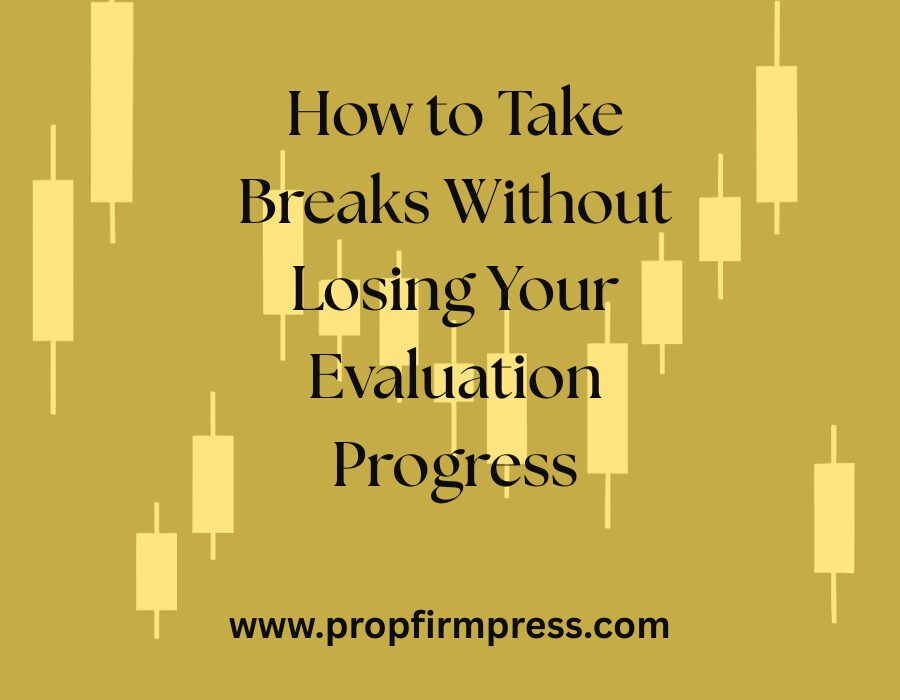Why Breaks Matter in an Evaluation
Prop firm evaluations can be intense. The pressure to hit targets within a certain timeframe—while avoiding daily or overall drawdown violations—can lead traders to obsess over every candle. But breaks aren’t a weakness—they’re a performance tool. When managed correctly, taking a break can improve focus, reduce overtrading, and extend your consistency. The key is knowing how to pause without losing progress.
Step 1: Know the Firm’s Break Policy
Before stepping away, review the firm’s official rules. Most evaluations have a required minimum number of trading days, and some also enforce a maximum number of inactive days. For example, The Legends Trading allows long breaks as long as you meet your minimum 5 trading days before requesting a payout. Others, like Instant Funding, may have faster timelines but allow flexible trading schedules. Always check the terms.
Step 2: Build in Break Days Early
Instead of burning out after 10 consecutive trading days, plan for rest ahead of time. Use a template from Prop Firm Press to schedule evaluation phases. For example:
- Day 1–3: Trade
- Day 4: Break/Review
- Day 5–7: Trade
- Day 8: Break/Sim Practice
This rhythm creates structure and mental recovery.
Step 3: Use Breaks Strategically
Instead of only taking breaks after losing days, also break after a major win. Overconfidence is just as dangerous as fear. Let emotions settle so you can return with objectivity. Plan breaks for:
- After reaching 50% of your profit target
- After three consecutive green days
- Before key economic events (non-farm payrolls, FOMC, CPI, etc.)
Step 4: Simulate During Your Downtime
Breaks don’t always mean complete disconnection. Practice in simulation mode without risking your evaluation account. Many traders use this time to:
- Test setups under new volatility conditions
- Journal potential trades without placing them
- Revisit trading rules
This keeps your skills sharp while reducing pressure.
Step 5: Set a Maximum Daily Cap Before the Break
One trick to protect evaluation progress is ending a good day early. Example: If your goal is $3,000 and you’re up $2,200, don’t keep trading for more. Lock in the win, and take a break the next day. This protects your equity curve and mindset.
Step 6: Use a Journal to Document the Pause
Write down why you’re taking the break, what market conditions look like, and how you’re feeling. When you return, this log will anchor you. It avoids random entries or emotional overtrading upon return.
Step 7: Adjust for Trading Day Requirements
If a firm requires 10 trading days, and you’ve only traded 4 in the first 2 weeks, avoid long breaks. Use lighter trading days (1 or 2 trades) to check the box without taking unnecessary risk. This helps you meet the rule while staying disciplined.
Step 8: Communicate With Yourself Like a Fund Manager
If you were managing someone else’s account, would you trade tired, emotional, or rushed? Probably not. Hold yourself to that standard. A break is sometimes the highest-performance action you can take.
Step 9: Avoid the FOMO Trap
Traders on break often scroll Twitter or Discord and feel like they’re missing opportunities. Remind yourself: the market will be there tomorrow. The goal is funding—not catching every candle. Stay focused on your plan, not someone else’s trades.
Step 10: Return With a Checklist
Don’t rush back into action. Review a simple checklist before your first day back:
- Am I emotionally calm?
- Have I reviewed the market structure?
- Do I know today’s news events?
- Do I have a clear setup to wait for?
Start light. One or two trades maximum your first day back.
Pausing Without Penalty
Breaks are not just allowed—they’re strategic. Prop firm traders who take measured pauses avoid burnout, reduce emotional trading, and maintain consistency across longer challenges. Just make sure your break is planned, documented, and followed by a structured return. This mindset shift can help you outlast and outperform the competition.
